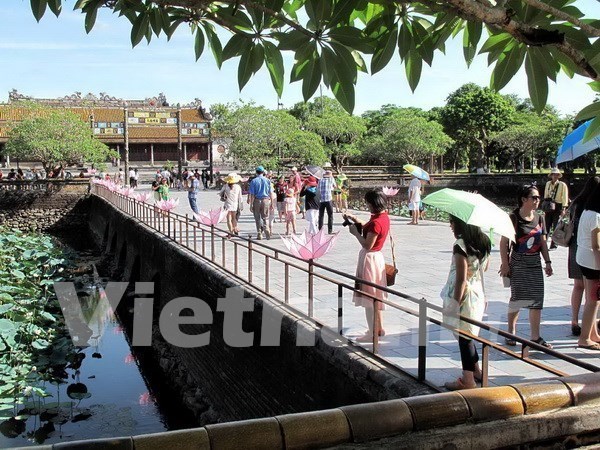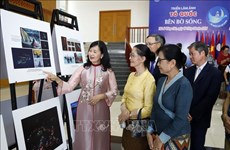Two-decade efforts to preserve Complex of Hue Monuments
The central province of Thua Thien-Hue has put many efforts to preserve and restore relics of the UNESCO-recognised Complex of Hue Monuments in Hue City, the former royal capital of Vietnam, over the past two decades.
 Hue Imperial City. (Photo: VNA)
Hue Imperial City. (Photo: VNA)Thua Thien-Hue (VNA) – The central province of Thua Thien-Hue has put many efforts to preserve and restore relics of the UNESCO-recognised Complex of Hue Monuments in Hue City, the former royal capital of Vietnam, over the past two decades.
Established as the capital of Vietnam in 1802, Hue was the political, cultural and religious centre under the Nguyen Dynasty until 1945. Many of its palaces, temples and pagodas remain almost intact, although some were bombed and ruined in the Anti-American Resistance War.
The province has allocated over 1.46 trillion VND (64.24 million USD) for funding the relic preservation and restoration between 1996 and 2017, including 933 billion VND (41 million USD) for the 2010 – 2017 period, according to Vice Chairman of the provincial People’s Committee Nguyen Dung.
The Prime Minister has approved an Adjusted Planning Framework for the Complex of Hue Monuments from 2010-2020 in June 2010, laying grounds for the province’s preservation work, Dung said.
As the result, more than 170 relics have been preserved, repaired and restored so far, including Ngo Mon (Meridian Gate), Dien Thai Hoa (Palace of Supreme Harmony), Hien Lam Cac (Pavilion of Radiant Benevolence from On-High), The Mieu (Complex of the Temple for the Worship of the Nguyen Emperors), Cung Truong Sanh (Truong Sanh Royal Palace), Dan Nam Giao (Esplanade of Sacrifice to the Heaven and Earth), Tomb of King Gia Long and Chua Thien Mu (Celestial Lady Pagoda).
The monuments have been touched with care, guided by the 1972 Convention on the Protection of the World Cultural and Natural Heritage, the National Heritage Law and a number of other regulations, in an attempt to avoid rebuilding them completely and ensure their authenticity.
The Hue Monuments Conservation Centre has carried out several studies to learn about ancient brick flooring, wells and history of each monument inside the complex. It has also collected royal decrees of the Nguyen Dynasty, produced publications on royal records and heritages and made archives of Nha Nhac (Royal court music), recognised as UNESCO intangible heritage in 2003.
The centre has been supported by international foundations, institutes and organisations from Japan, the US, France, Germany and Poland, which provided funding for the conservation and training for its staff to improve their capacity.
Japan has provided aid for relic conservation in Hue (the central province of Thua Thien-Hue) since 1990. The first large-scale project with Japanese funding, 100,000 USD, was to restore the Ngo Mon – the main gate to the Hoang Thanh (Imperial City) and a symbol of Hue.
A team of experts from Germany helped restore frescos in An Dinh Palace while those from Poland have supported the province in white ant prevention and restoration of To Mieu Temple Complex.
Thanks to such efforts, more than 2.5 million tourists were lured to the Complex of Hue Monuments in 2016, with half of them being foreigners, rising from only 2,000 in 1996.-VNA













